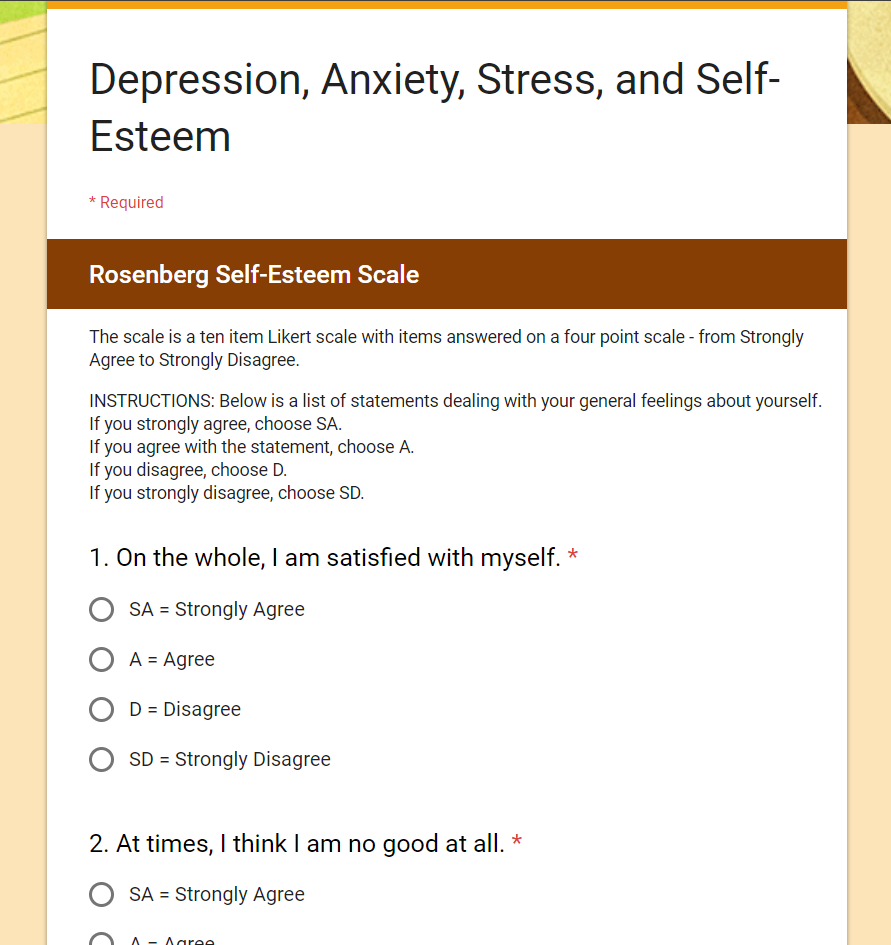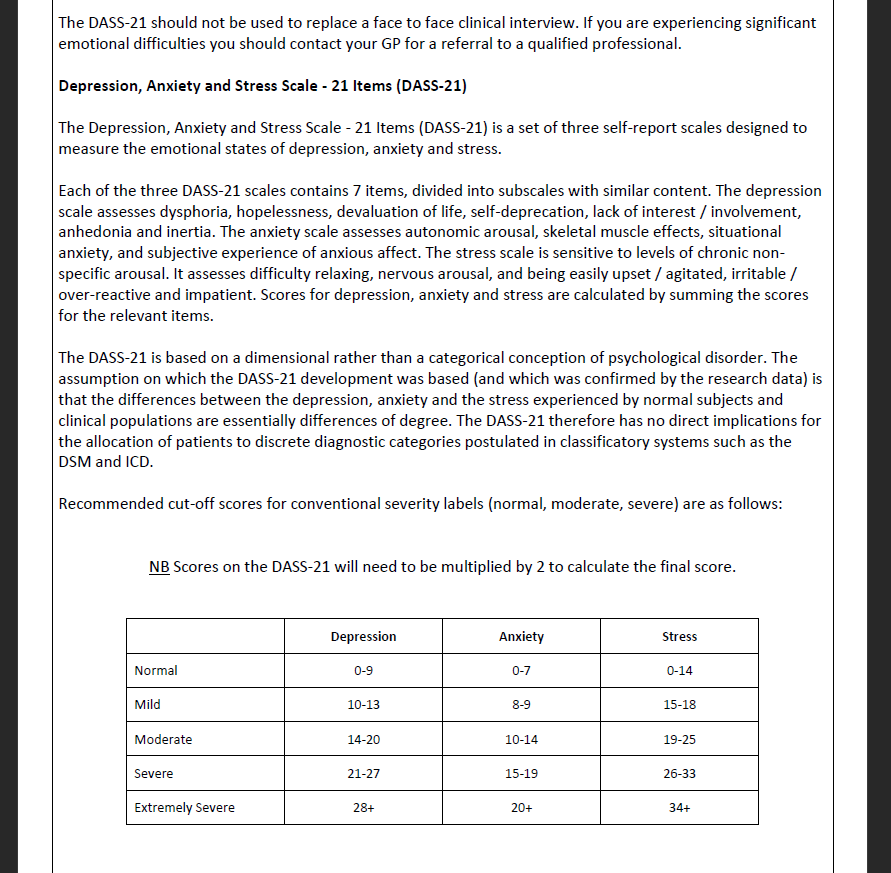Coding Strategy
- Farah Faisal
- May 11, 2018
- 2 min read
The scales used were converted to Google Form questionnaires for each scale in order to send them to the participants. The following images show the appearance of the forms:


After all the participants answered the questionnaires, the responses were downloaded in an Excel worksheet directly from the Google Forms. They were then separated into two different sheets, for each scale, as indicated in the following image. An unique ID was assigned to each participant as well.

The variables were then specified in SPSS.
The ID uses Ordinal measurement.
The Kulliyah, Gender, Level, and Matric variables use Nominal measurements.

The Kulliyah and Gender variables have their own criteria as shown below:


The scores for participants were then specified. Scores were named as 'scale_item.time' format. For example, 'dass_4.1' would mean the 4th item in the DASS-21 scale for time 1. The same applied to the Self Esteem scores as well.


The scales were then specified using the scoring instructions that came along with the scales. The DASS-21 scale used a range of 0 - 3. Since DASS-21 is normally used for its subscales, we decided to use the total score instead of subscale scores, to have an overview. The scoring instructs us to add all the scores and then multiply them by 2 in order to get a final score. This step will be shown in another post.


On the other hand, the Self Esteem scale comprised of 10 items, with items 2, 5, 6, 8, and 9 being reverse scored. In the scale itself, the scale makes use of SD, D, A, SA for its questionnaire. However, the scoring instructions show the conversion of each item, and so, the scores have been specified in SPSS. As for the reverse scored items, it will be explained in another post under 'Screen, Cleaning, Prepare.'


Using all this information and specification of variables, our coding strategy is set, and the data ready to be keyed in.





Comments